Ordo Templi Orientis Phenomenon
O.T.O. in Switzerland
The Psychosophical Publishing Company
Die Psychosophische Gesellschaft

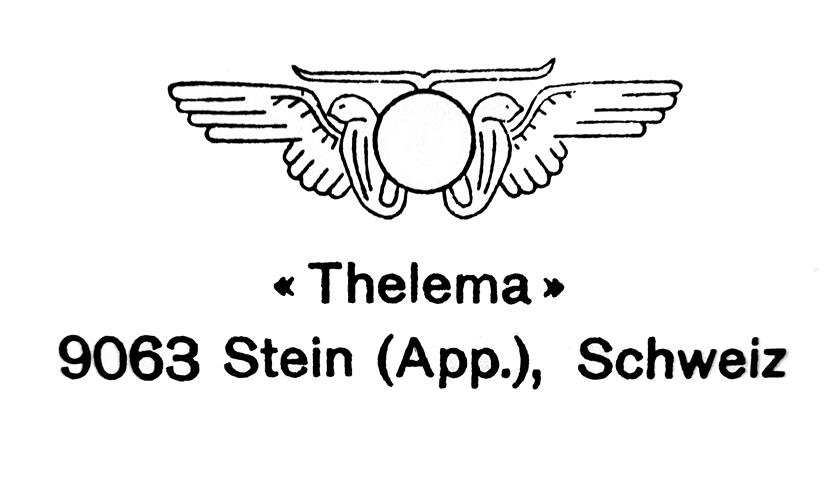

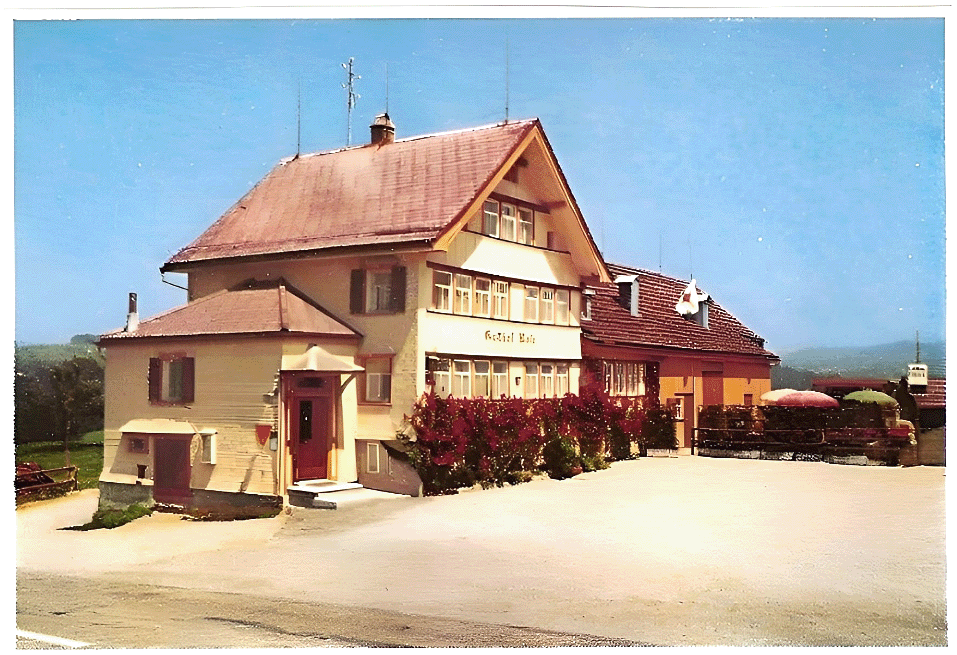




|
Context: Thelema in Appenzell. Photos of some protagonists in the gallery. 
The titles 'Psychosophic' or 'Psychosophical' derive from a lecture that Rudolf Steiner gave in 1910 called "Anthroposophy — Psychosophy — Pneumatosophy." [1] In the statutes published on November 18th 1945 it was stated that "the foundations of the P[sychosophical] S[ociety] go back to the year 1940," [2] but in the statutes published on November 18th 1950, the date of foundation is given as November 18th 1945. |
| After Felix Lazerus Pinkus's death, Hermann Joseph Metzger published the "Mitteilungsblatt des psychosophischen Institutes", five newsletters from February 12th 1947 on, as the 'Verlag Psychosophisches Institut' ('Psychosophical Institute Press'), with "contributions from researchers in the occult and the exact sciences." For instance, Peter Mano (Metzger himself) contributed a piece entitled 'Occultism, Alchymy, Magic', [3] Felix Lazerus Pinkus one called 'Male and Female', [4] and Thomas Egloff [from Pinkus' Abramelin-circle] one called 'Ancient Fire'. [5] | 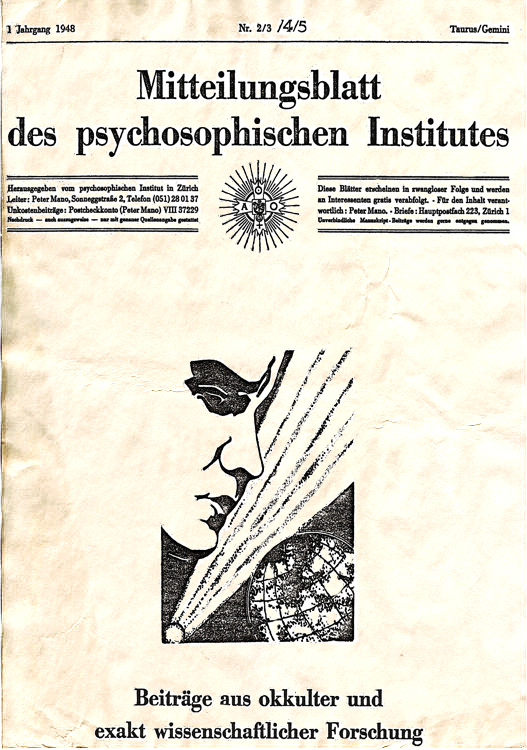
|
1948, the Swiss magazine 'Arve' published advertisements for the "Mitteilungsblatt des psychosophischen Institutes".
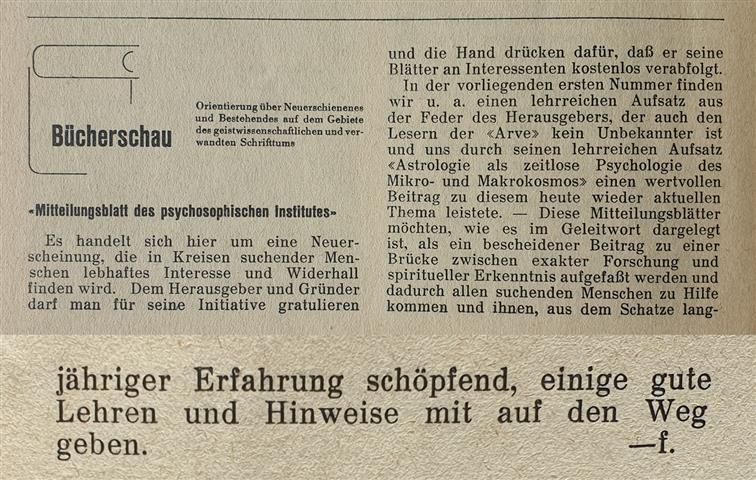
In 1948 one Brother (Karl Brodbeck or Metzger?) gained possession of the IO [Order of the Illuminati] "so that the Order could could begin to work once more. The Austrian [Eduard Korbel or Hermann Medinger?] and German [Eugen Grosche] Brothers also constituted a PC for the work in public. Thereafter the Swiss Brethren retained this form of constituted body to provide a legal basis for the Order's various study-groups." [6] "While the real Psychosophical Society had disbanded [...] at the same time M[etzger] was running his Psychosophical Society à la Metzger at Stein." [7] |
|
Metzger's 1949 booklet published alias Peter Mano:
"Strahlende Welt — Beitrag zur Geschichte der Radiästhesie" | 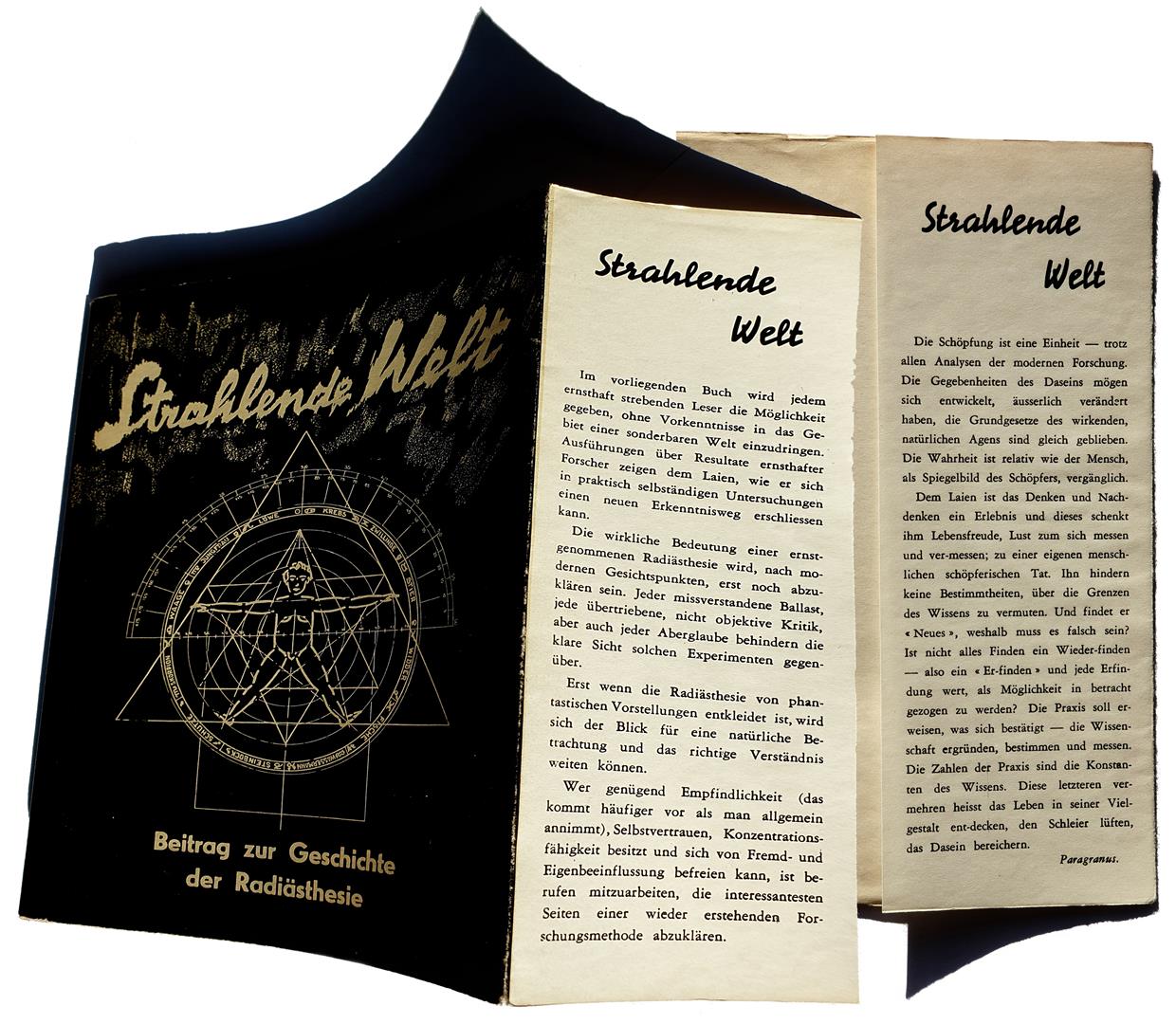
|
Soon the Psychosophical Society's AO emblem made its appearance; it is still used by them to this day. One of Metzger's multifarious letter-headings gave further details: "Psychosophical Institute Press. Director: Peter Mano. Departments: Psychosophy,
Literature, Nature and Art, Occult Research, Conselling in Success and
Living, Graphology, Astrology, Biology." [8]
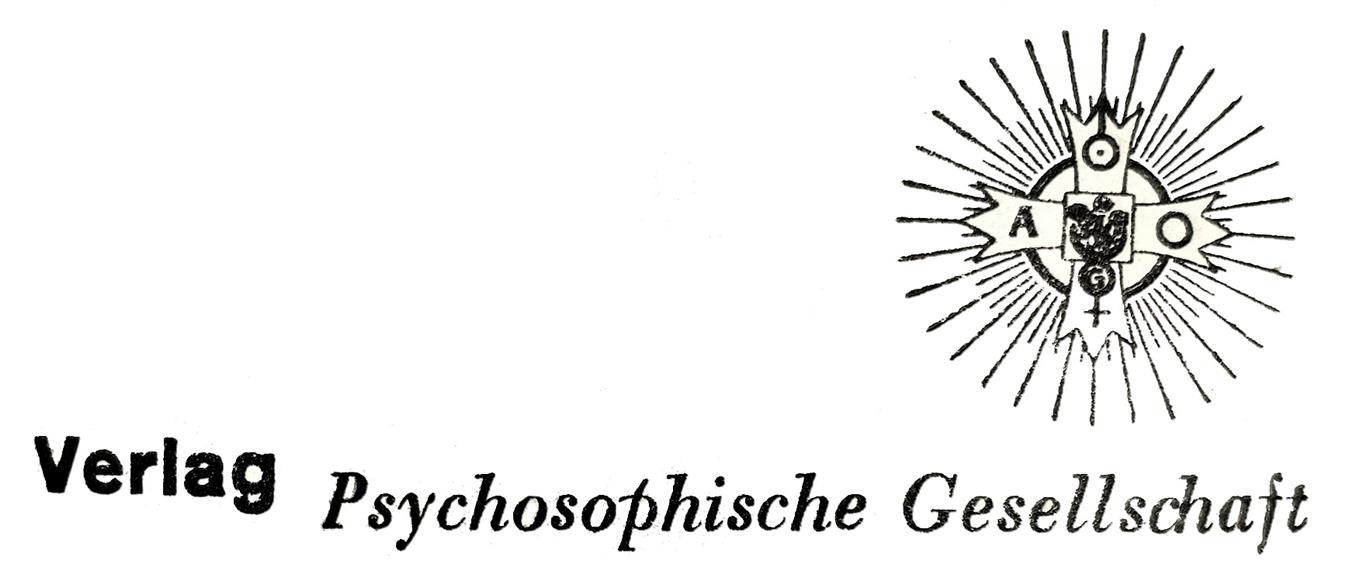
Then on October 18th Metzger founded his Psychosopical Society as successor to the Psychosopical Institute Press. [9] "The story of our press began in 1950 when we resolved not to proceed any further with public lectures, but [...] through printed matter and books."[10] 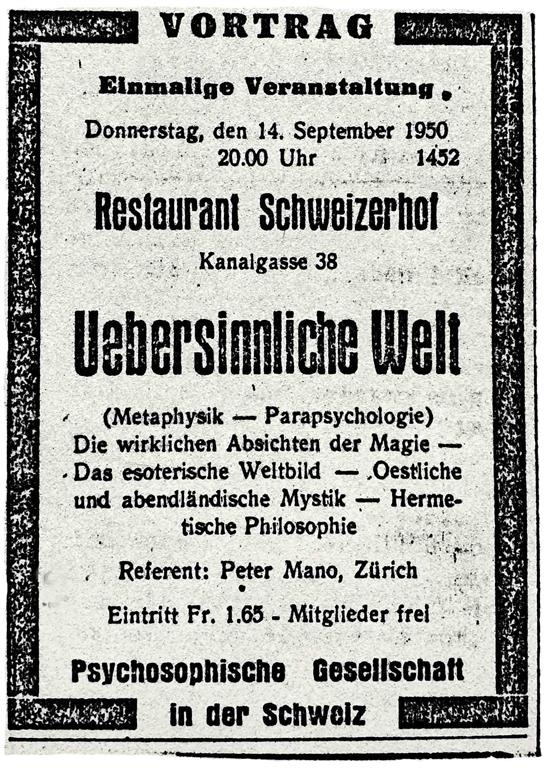
The Psychosophical Society's Statutes of 1950 bore the signature of Charles S. Huber (president of the concern, who had provided it with an article on Cagliostro), [11] and Anna Werder-Binder "Rhodanuba" - Metzger's housekeeper and a proponent of racial "herditary hygiene." The Society's actuary was Fräulein Aeschbach "Chochmah", while Metzger was mentioned again as "Peter Mano." On the advice of a lawyer, any reference in the Statutes to the Society's resembling a Masonic organisation was carefully avoided. Metzger feared a repetition of the Nazi-inspired Fonjallaz initiative of 1936, which would have banned Freemasonry in Switzerland; although it was rejected in the ensuing referendum with a huge total of 500,000 votes [12] cast by Swiss citizens. [13] Consequently the Psychosophical Society was constituted "as a scholarly association according to Article 60 of the legal code." "We are not intending to establish, or co-operate with, Lodges or secret societies in Switzerland or any other country." [14] Metzger and Eugen Grosche discussed a potential German Psychosophical Society: "The first requirement for the administering the Psychosophical Society is that the members of the governing body are the Srs. & Bros. of the O.T.O. In Germany it could be the FS." [15] The outer order of the Swiss PS was called the "Esoteric Study Society" (ESS), a title that Eugen Grosche had dreamt up for the outer of the original Fraternitas Saturni in the 1920s. For the concomitant propaganda publications, Metzger was thinking of an annual budget of 4,000 Swiss francs. The publications were to be "like the old Oriflamme, Saturn Gnosis, or the Sphinx," and were "intended to have a print-run of 300, of which about 100 were destined for Germany. There was a double goal: cash and propaganda." [16] In February-March 1951 two more titles appeared on Metzger's letter-headings: "Commercial Printers" and "Psychosophical Institute Press"; it was at this stage that he bought the printing-works. |
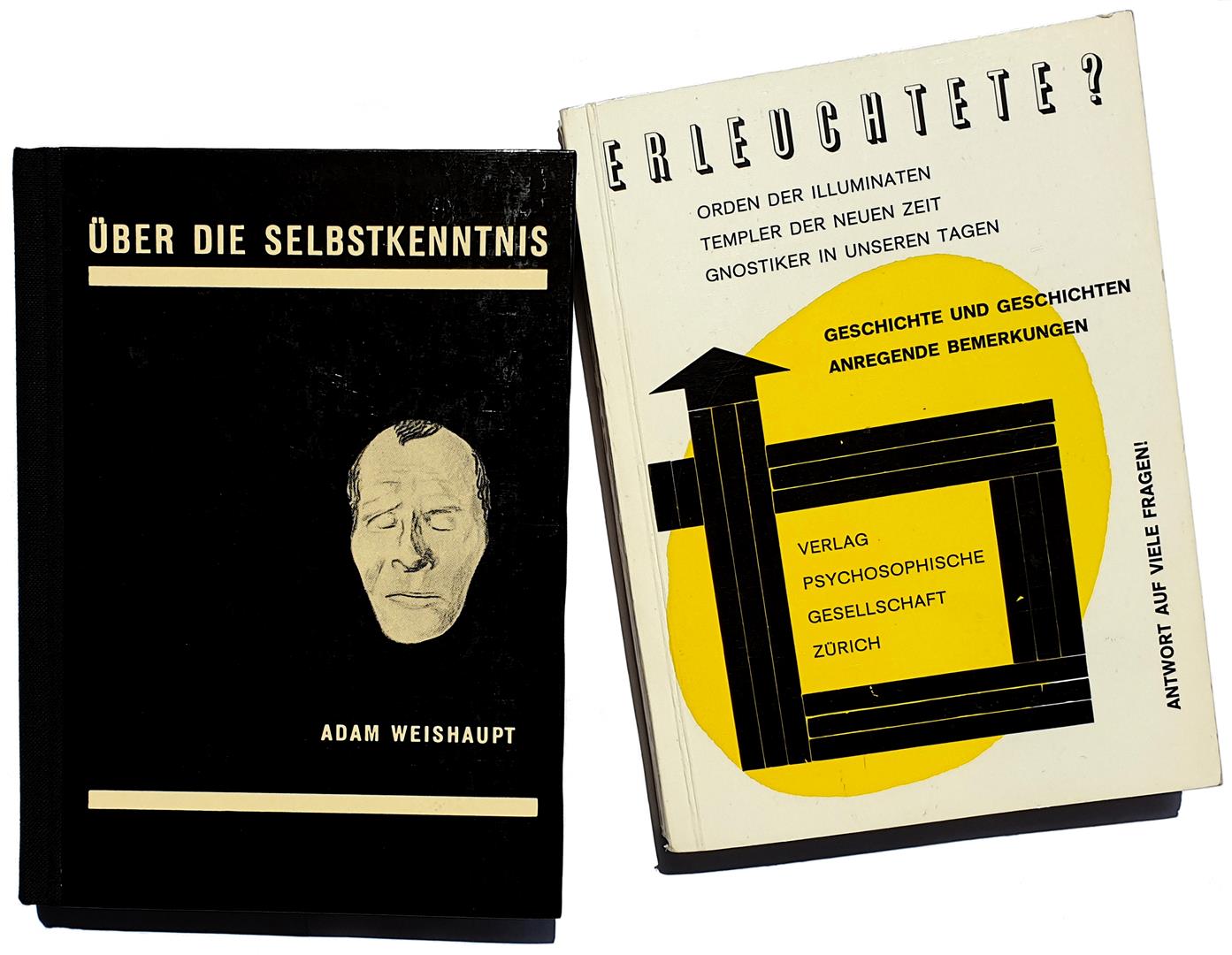




|
In the forewords he penned to the _Holy Books of Thelema_ (Crowley's
inspired writings from 1904-11) [17] Metzger made use of the Sigil of
the A.·. A.·., claiming: "We who have studied his [Crowley's] teachings, having understood and accepted them, nurture in ourselves the desire to promote enlightenment for mankind's good, and the advancement of human evolution." [18]
"The object of this publisher is to promote the A.·. A.·.'s literature." [19] While the O.T.O. had mainly served as Thelema's vehicle after Crowley's death, now the A.·. A.·. was given more prominence. Metzger said that it was not possible to write any history of the A.·. A.·., since it possessed no structure as an Order, save through self-initiation, or working from "Master to student." 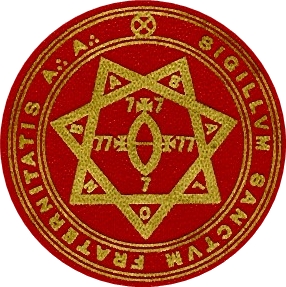
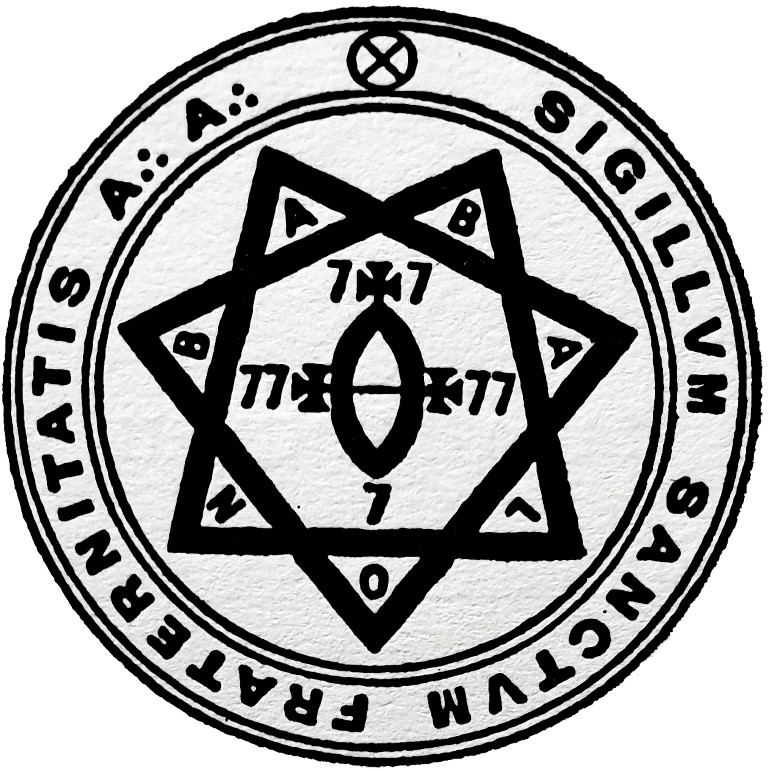
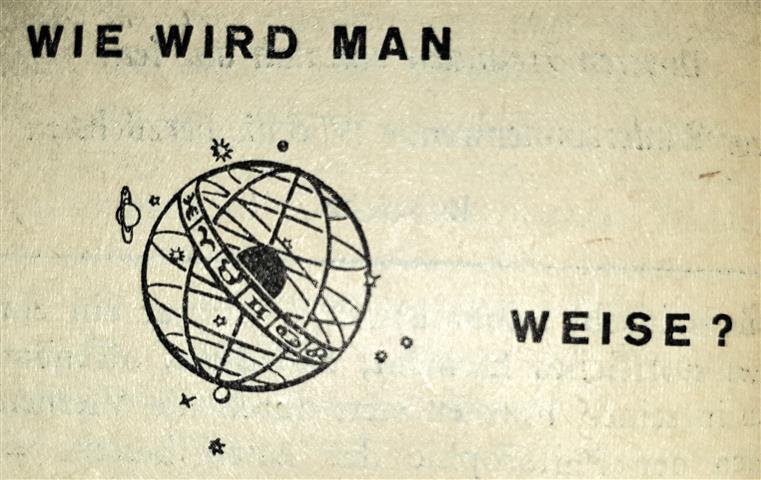
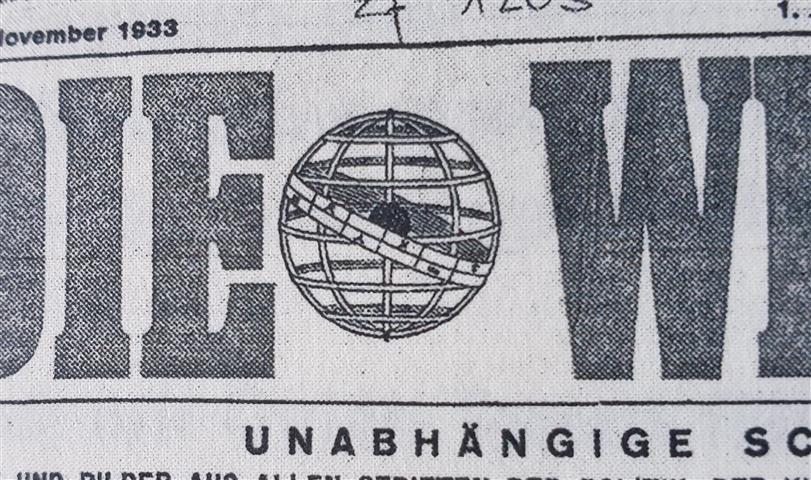
On March 3rd 1952 Metzger inaugurated the Psychosophical Company Press "for the enlightenment of students of wisdom." On the 20th of that month the wealthy Fräulein Aeschbach was appointed as the Press's proprietor, while Georges Bérard was described as its president - though he soon disassociated himself from the whole concern. The company address and printing works were given as Herr and Frau Metzger's residence in Zurich. [20] On March 20th 1953 the five-volume "Ketzerbrevier" (Heretic's Breviary) series was commenced, its last number appearing in July 1958. The "Ketzerbrevier" was complemented by the "Ex Occidente Lux Mitteilungsblatt" (EOL) (Ex Occidente Lux Newsletter), which started in early 1954, and had reached 74 numbers by August 1960. It is claimed that the "Ketzerbrevier" was discontinued solely on account of its rather tendentious name. [21] Also in 1954 the ten-volume "Aequinox" series (with Crowley's works) began; it finished in March 1959. |
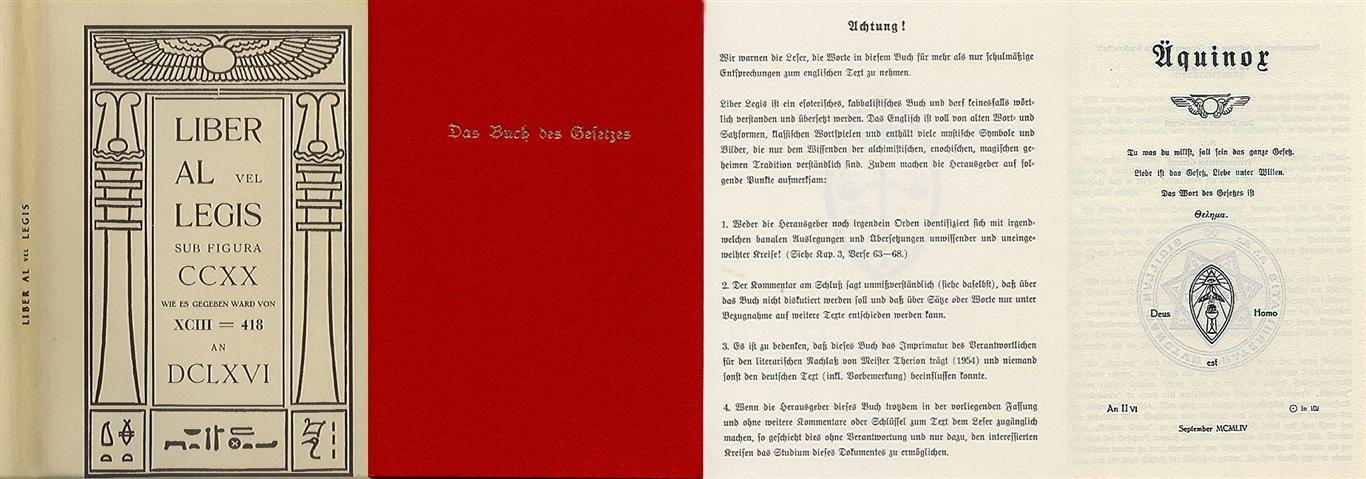
| Furthermore, Karl Germer had come to think towards a correspondant named Williams that “the Zürich group began anew in a proper way in 1924.”One result of this jubilation was that Germer provided Metzger with a sort of carte blanche to further his occult ambitions: “Firstly, you have no need to justify yourself to me. Your work counts,” he told Metzger on 3rd October, 1954. After March 1954, statements like “We, Master Therion’s authorised heir” started appearing in Metzger’s publications; the same books and magazines in which Germer was now publishing his expositions and German translations of Crowley. |


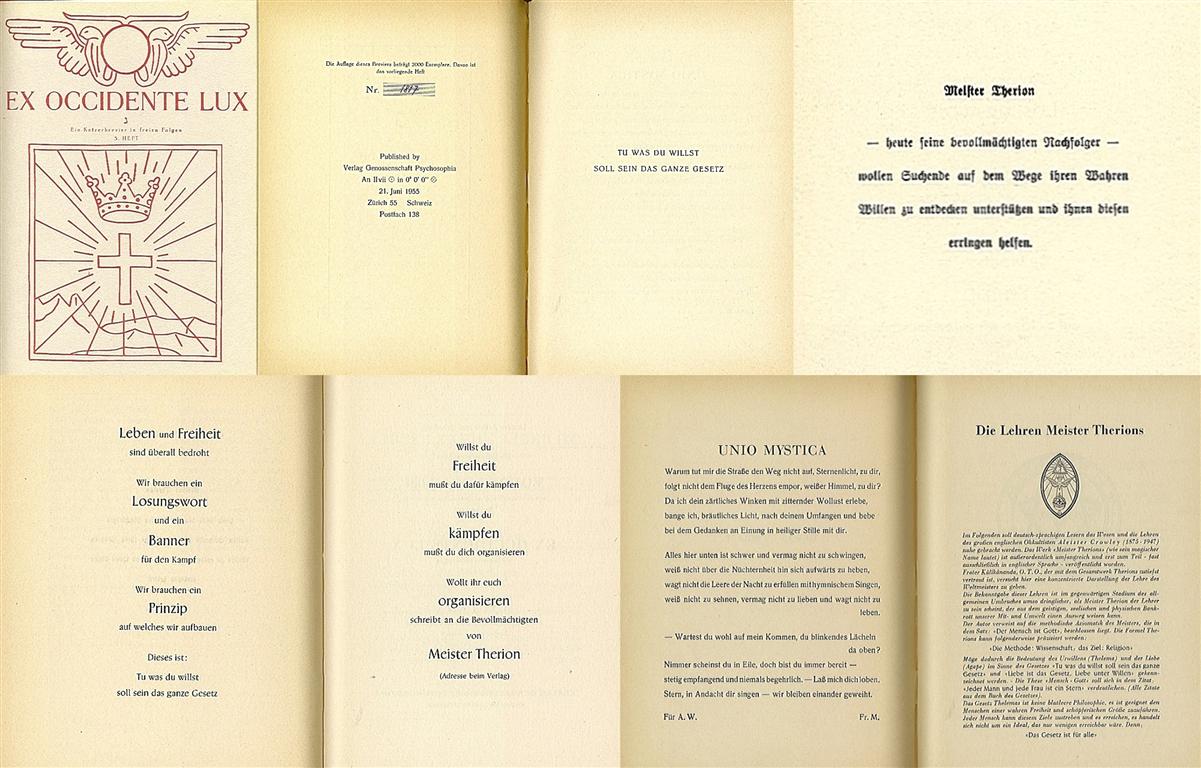
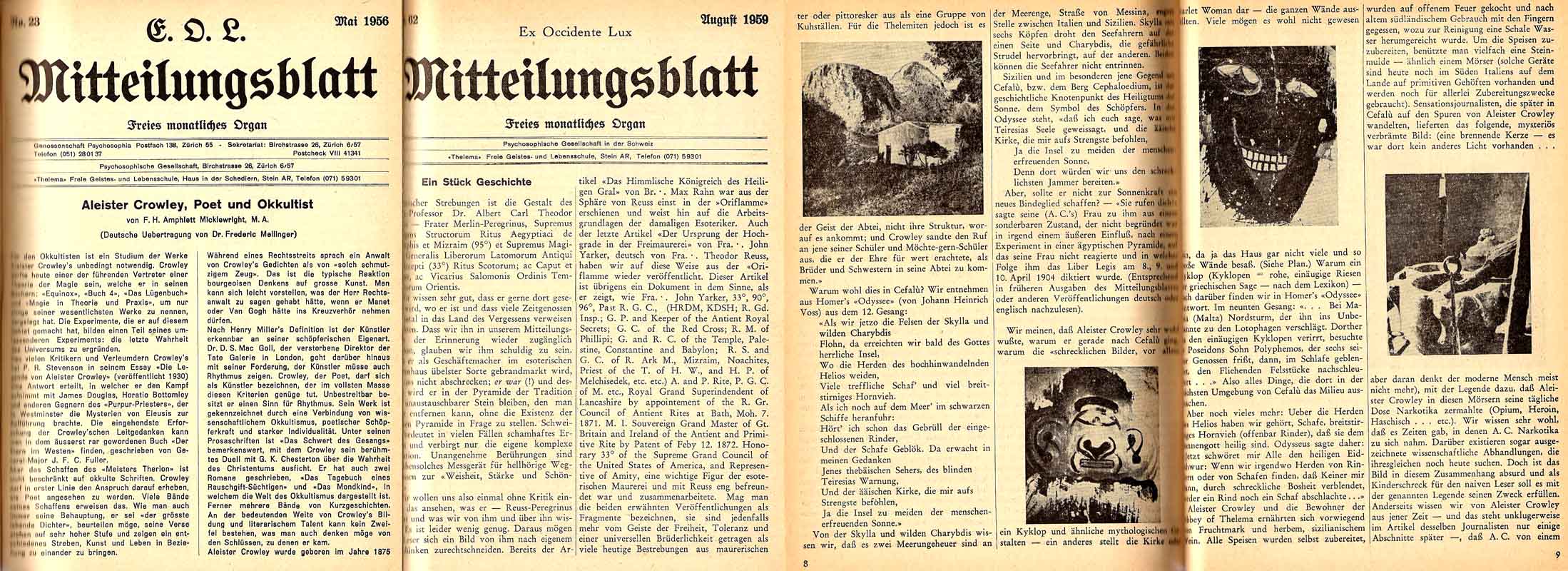



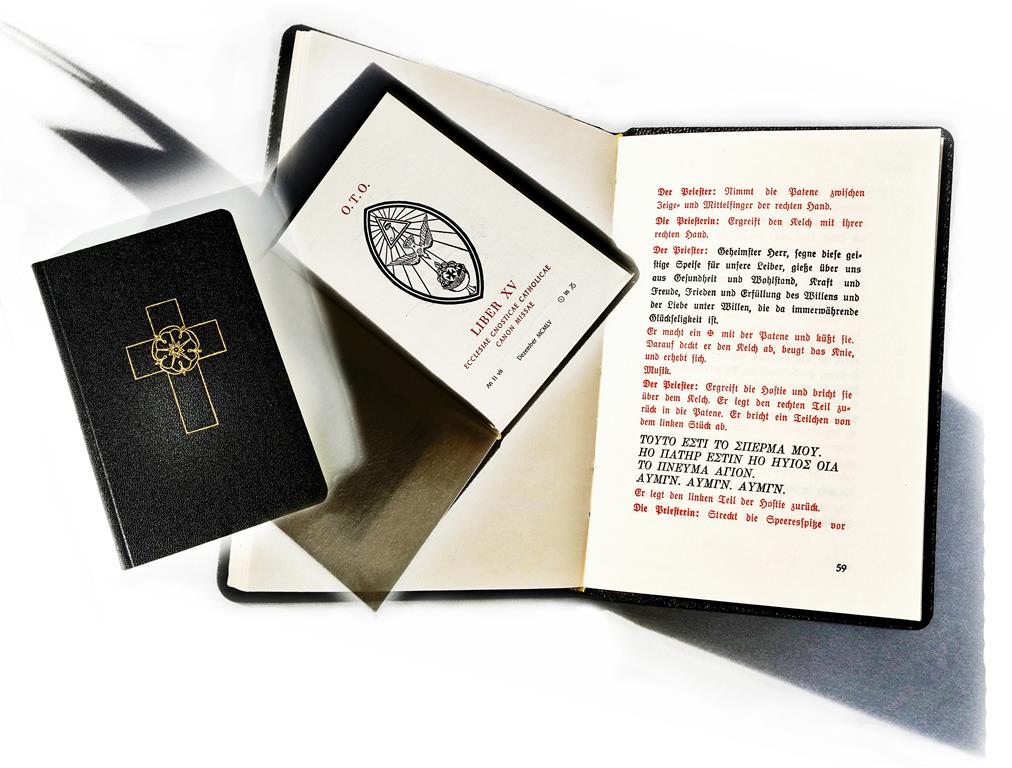
On August 3rd 1953 the Psychosophical Company's statutes were altered;
[22] on June 5th 1954 both Metzger and the Company's print-works took
up a new commercial address on the Birchstrasse in Zurich. Then on
November 14th 1956 the Psychosophical Company was dissolved, six months
after Heinrich Tränker's death, and three
months after Friedrich Lekve's death; though the
Psychosophical Society itself continued, and took over the Company's
titles. [23] The print-runs shrank — the "Aequinox" series (Nº V of
September from 1,000 to 500 copies, and the "Ketzerbrevier" (Nº 4 of
December 1957) from 2,000 to 500.
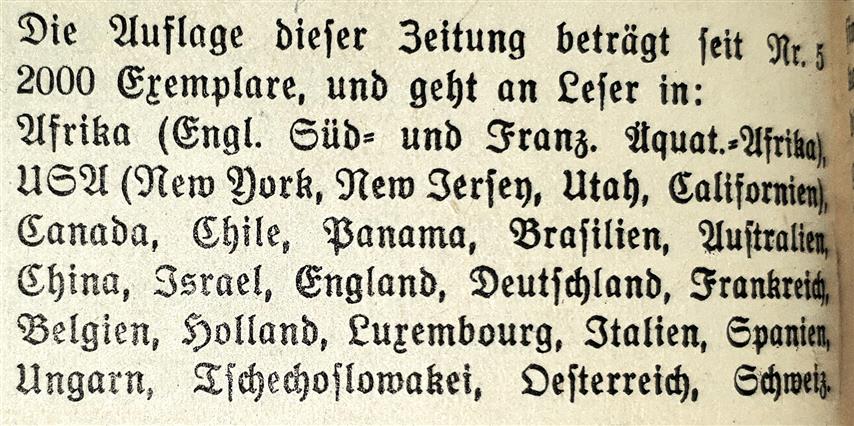
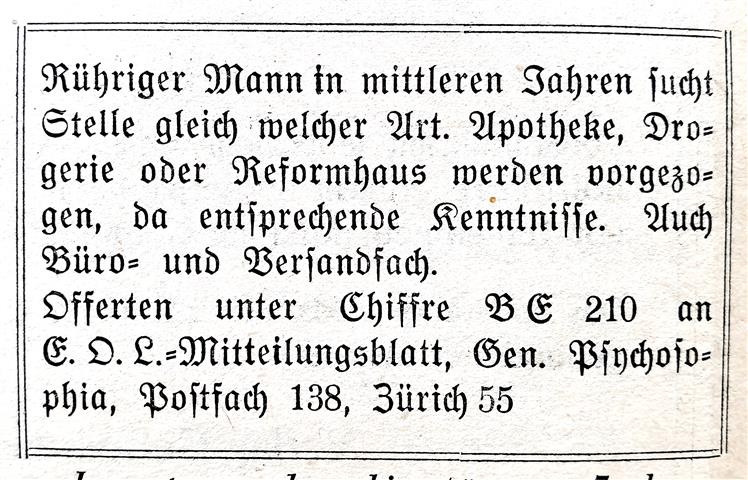
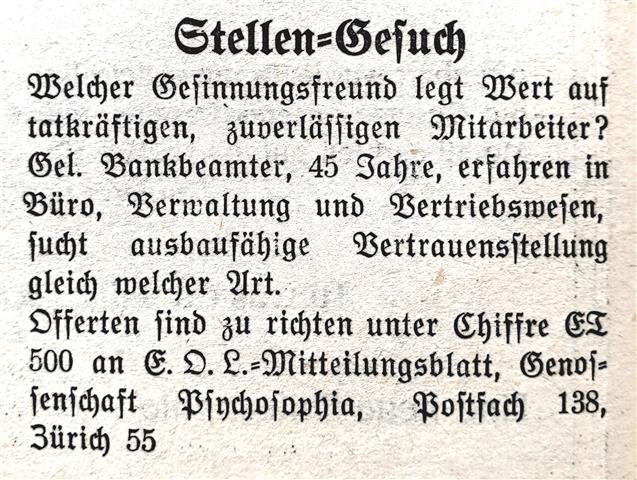
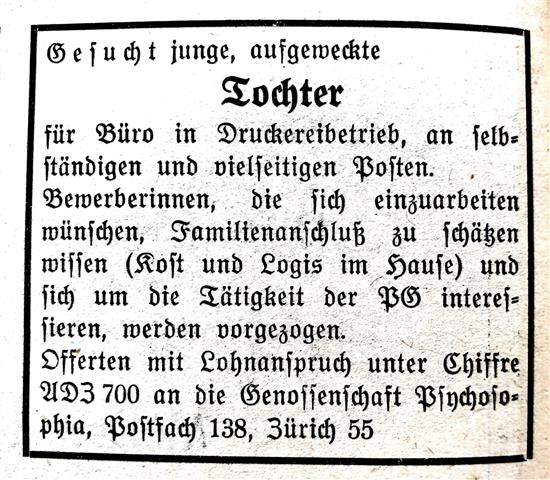
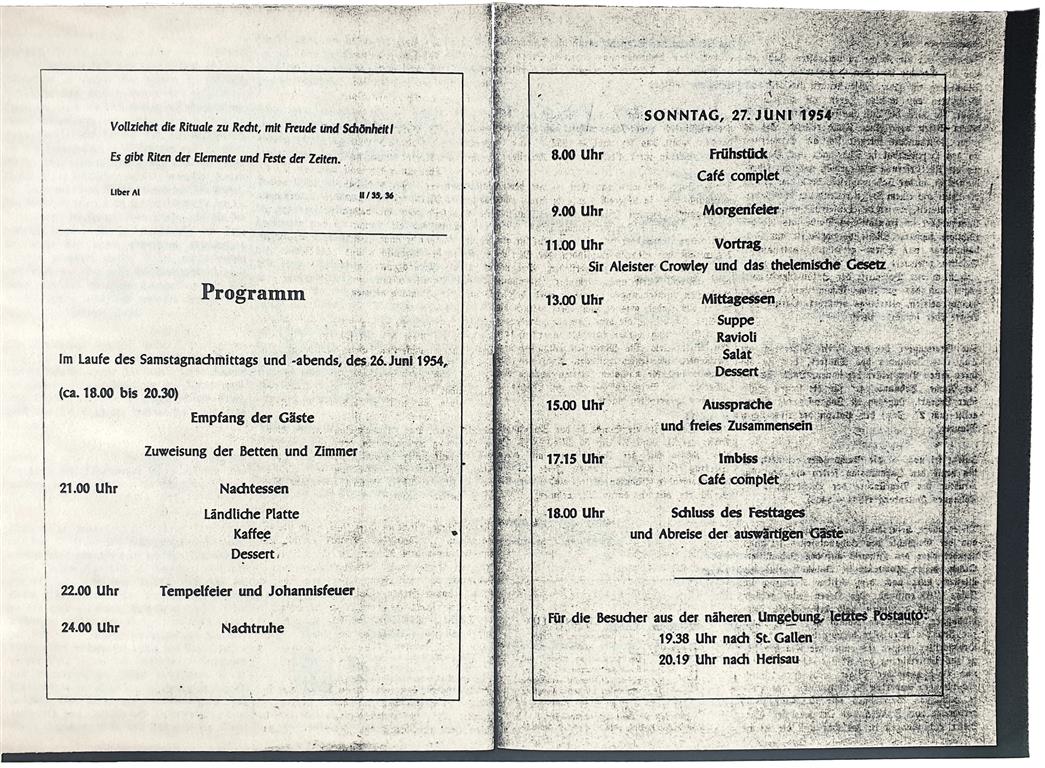
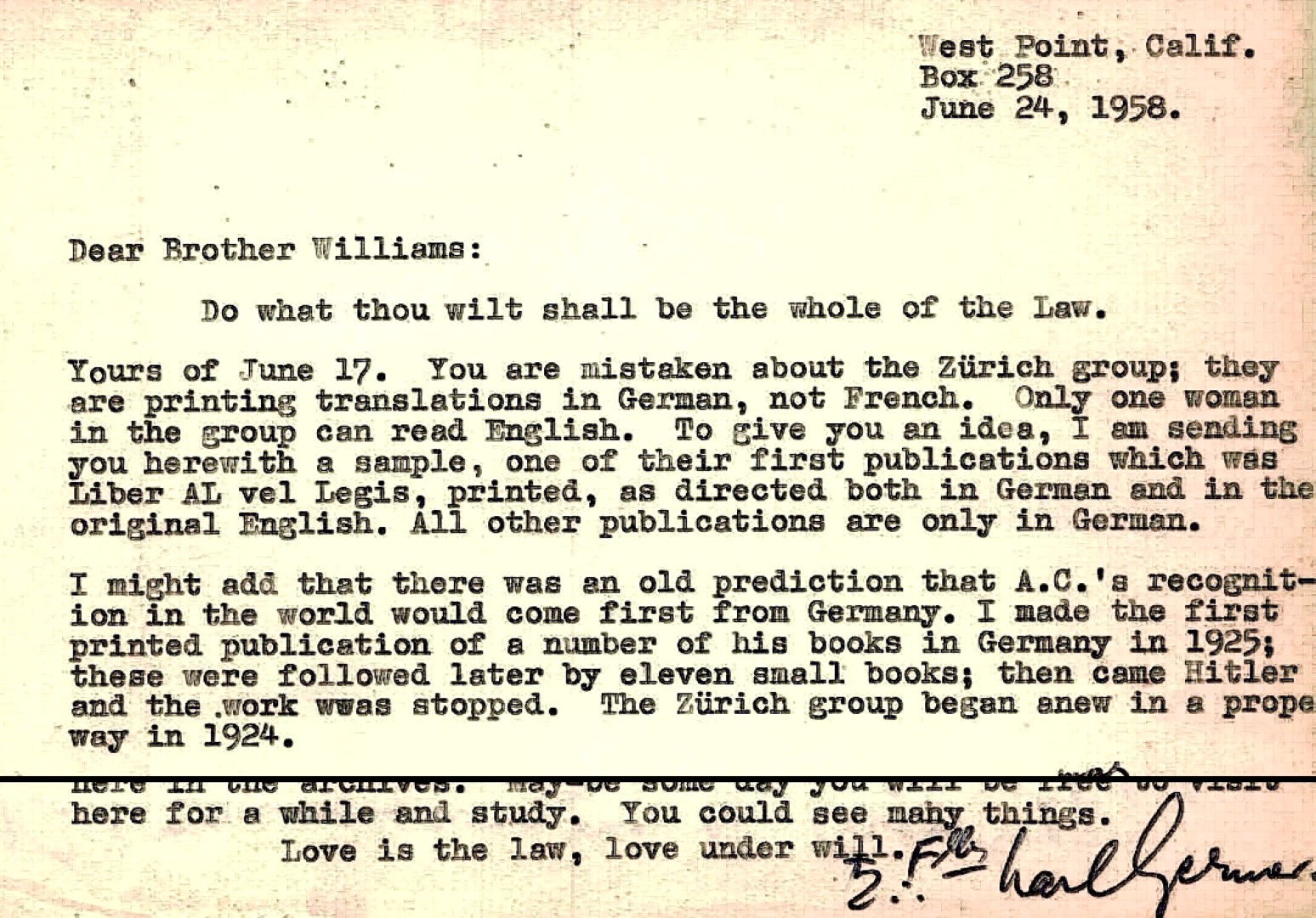
Exclusively (it was claimed) on grounds of "promoting an increase in advertisements," [24] the first of Metzger's 150 numbers of the "Oriflamme" appeared on March 20th 1961 (it was continued from December 1974 to 1976 as the 15 volumes of the "Oriflamme Seminar Lectures"). Its print-run was claimed to be between 3,400 and 3,500 copies, and it was supposedly distributed in 45 countries; certainly some twenty-eight different concerns advertised in the "Oriflamme" Nº 51 of May 1965, while between October 1964 and January 1972 altogether fifty-nine replies to reader's letters had been published. The commercial arm of the printing business was located at the business address from June 5th 1954 to December 1969, and from 1957 could be contacted at Metzger's residence in Zurich as well. On May 31st 1966 the statutes were altered yet again, making the various groups (by which the O.T.O., IO, G.K.K. and F.R.A. were meant) legally sovereign and independent. [25] "Oriflamme" Nº 97 appeared after a short pause in May 1970, copyrighted in Zuerich, issued in Stein. The magazine was stopped in December 1974 due to lack of manuscripts. [26] 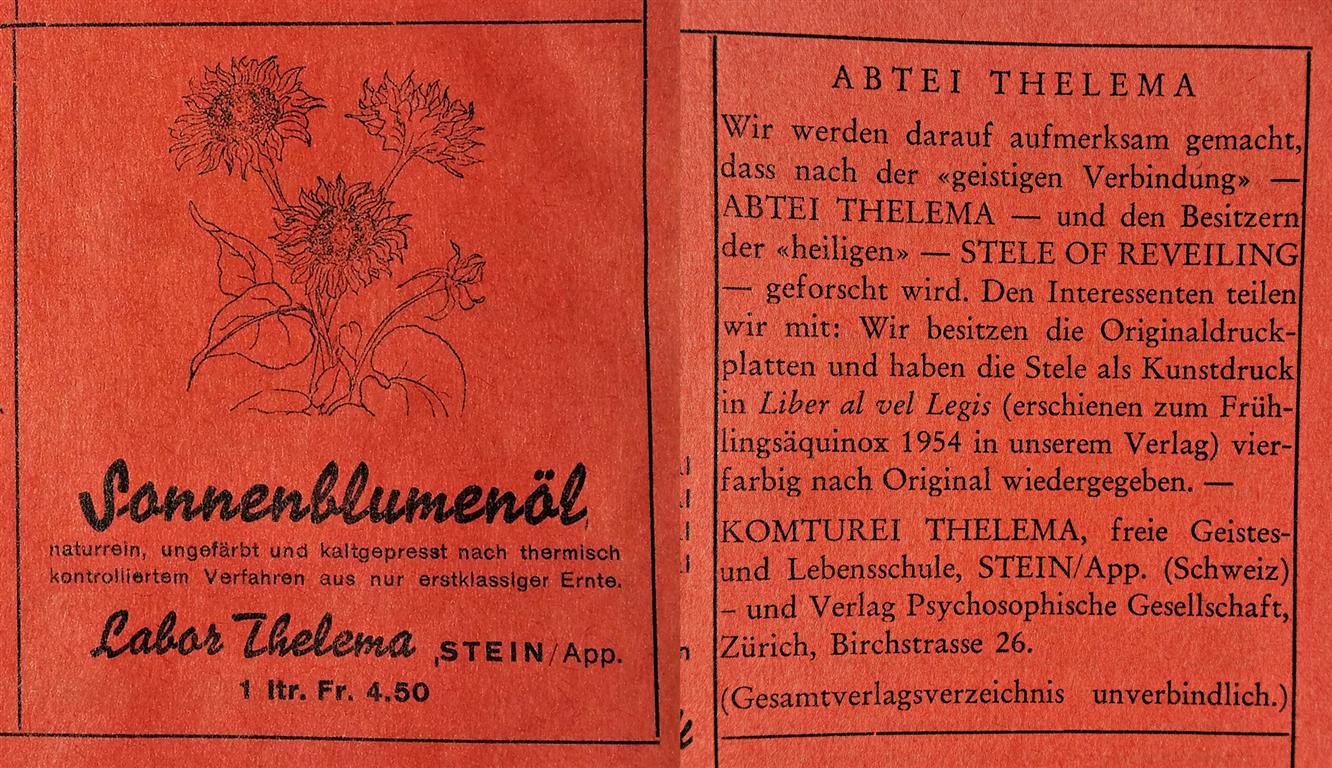
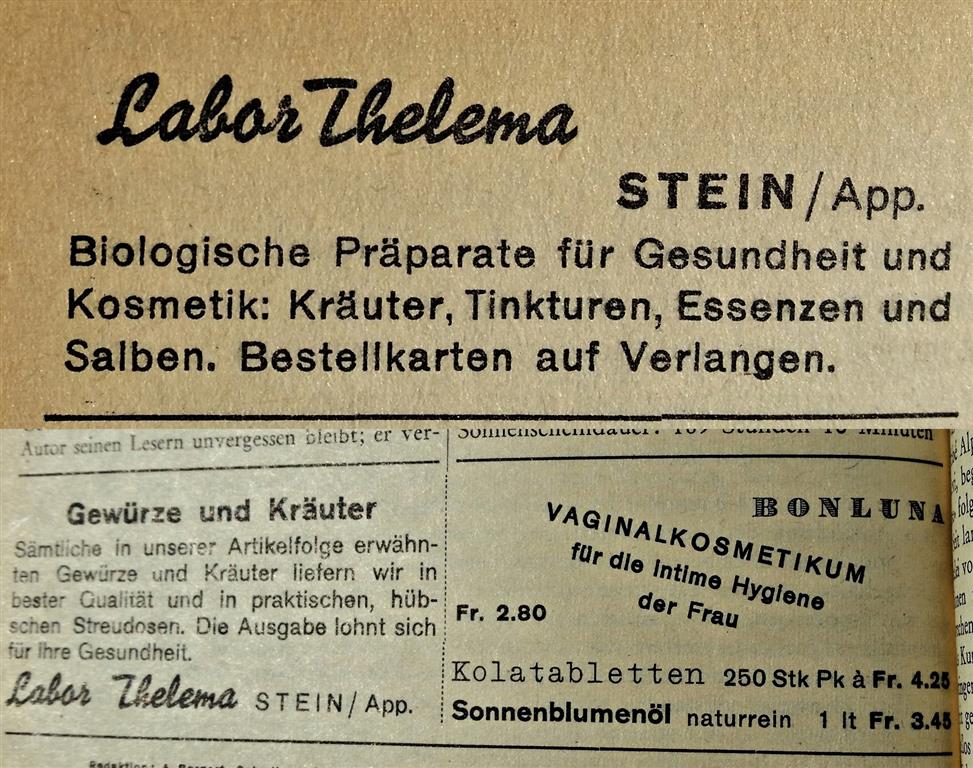
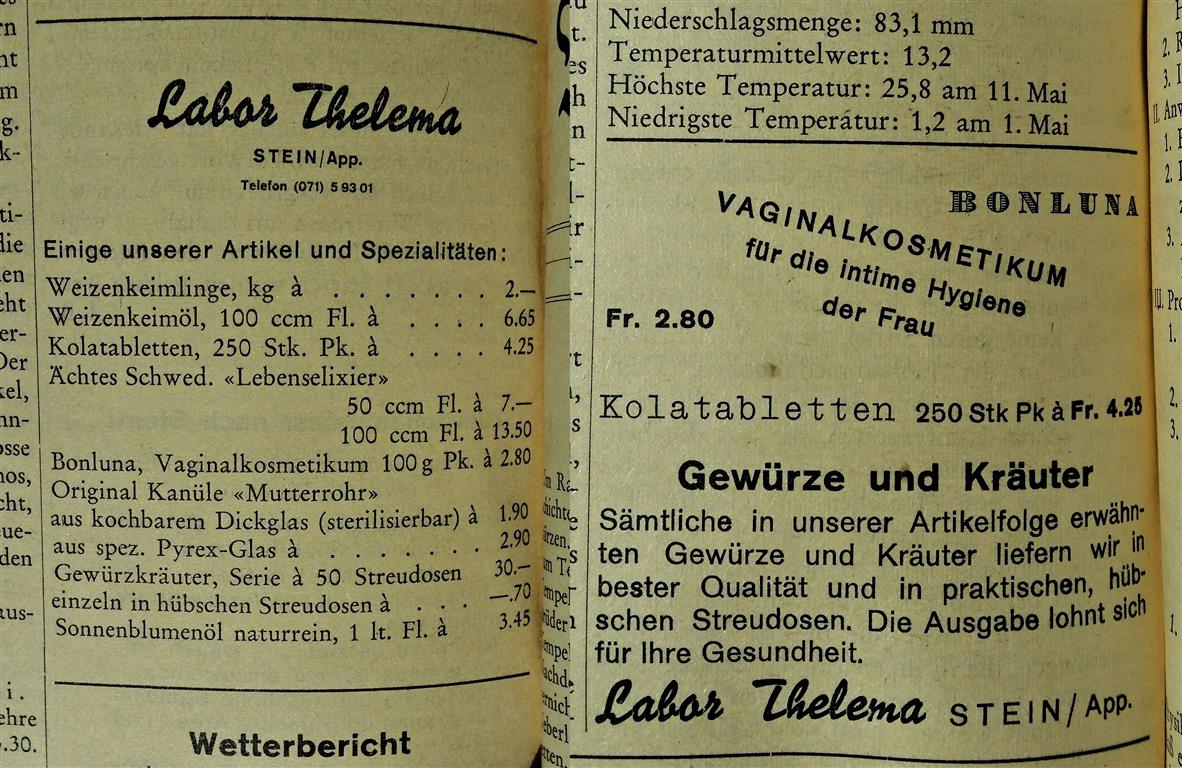

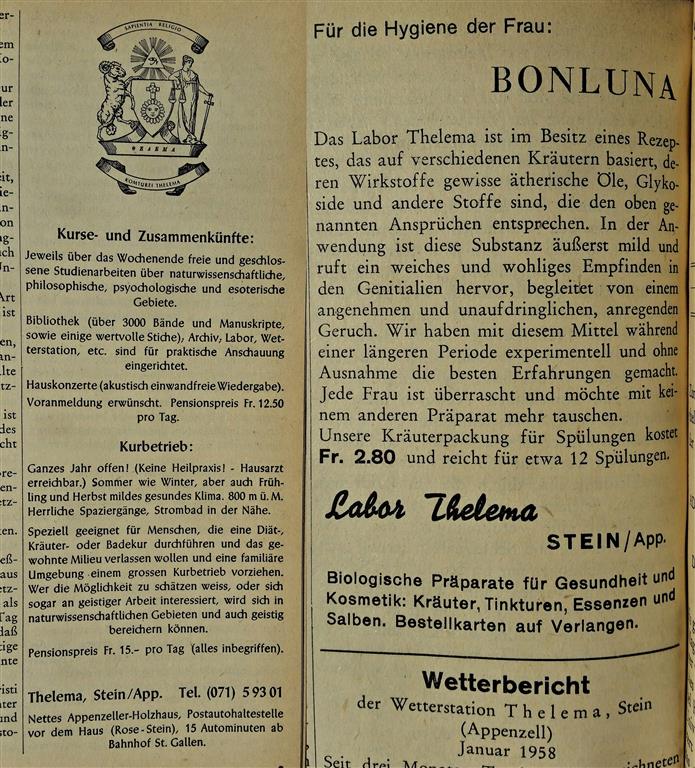
In the 80s Markus Kumer transformed the Psychosophical Society into something which he dubbed the 'Verein für Humanistische Forschung' ('Association for Human Advancement'), which however does not appear to have been officially registered in Stein or Zurich. My question about this to the local authorities brought no response from Fräulein Aeschbach, when it was forwarded to her. [27] |
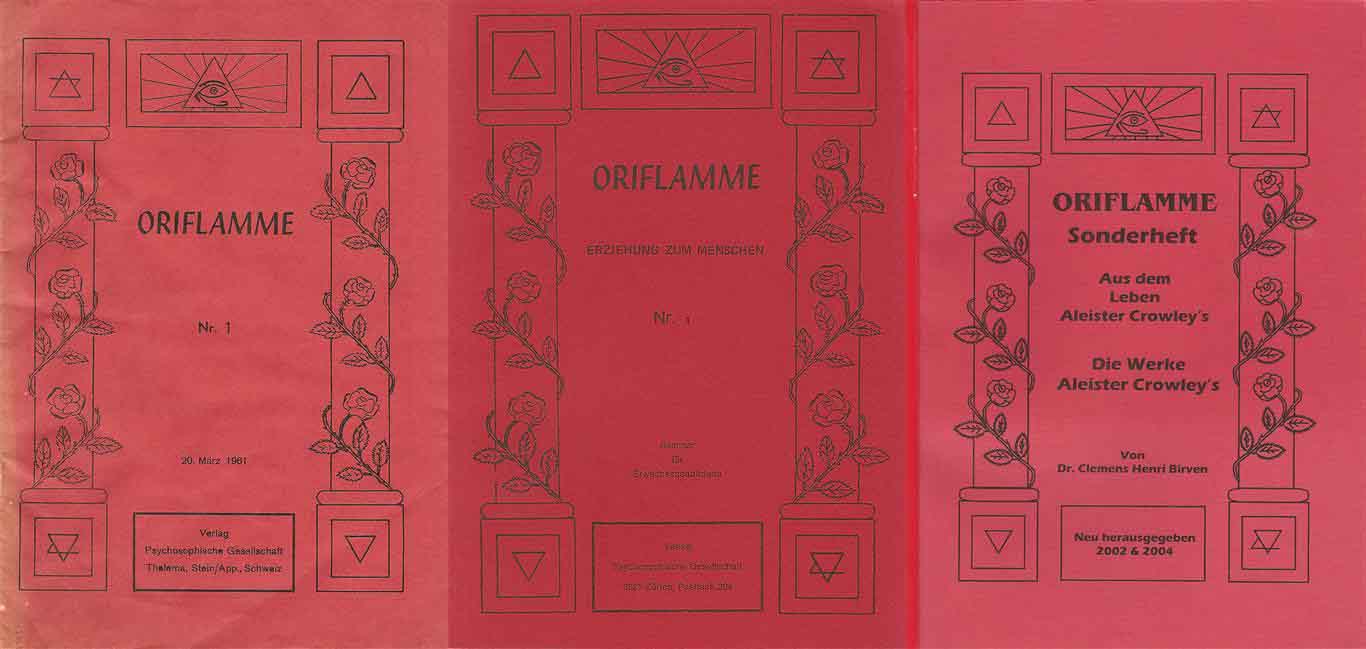
|
Societas Totius Mundi Illuminatorum While he was building up his collection of Orders, Metzger put his thoughts down as follows in November 1962: "In the War the Psychosophical Society tried to establish a platform, sadly in vain. Although two lectures were given for this purpose, the attempt yielded no result." [28] These talks were most probably the two announced at the time as being on the 'Supernatural World', and 'Mysticism and Magic'. Metzger added that advertisements were placed, but that these had turned out to be a "mistake." The two lectures were given in Berne, and then repeated in Zurich, Biel, and St. Gallen. It seems that the advertisements had attracted only "some barely educated" public. [29] "Our Order will present a platform according to the ideal image of the universal chain of Brothers." [30] "The goal: the brotherhood of Man in one Temple, which includes the whole of Mankind." [31] Thus Metzger readied himself for seeking out brotherhoods that he could forge into links for his own 'chain'. Metzger was influenced by the schools of thought of Count Keyserling (1880-1946) and Countess Zoe Wassilko-Serecki (1897-1978), to take an interest in Joseph-Marie Hoëne Wronski (1776-1853), who had contrived an unbroken occult succession stretching back to the Order of Knights Templar; Metzger also became very much interested in Johann Baptist Kerning (or Krebs, 1774-1851) who had influenced Arnoldo Krumm-Heller. [32] With the Adonists, who were so often involved in "erotic questions", Metzger "learnt one day a week for two years," "in an intensive way." The Festival of St. John [33] was held in the Ritterhauskapelle at Bubikon in 1951-2 by the evangelical Knights Hospitallers (or Knights of St. John). Although Metzger and his ladies took the A.M.O.R.C.'s correspondance-course, the A.M.O.R.C. and A.A.O.R.R.A.C. were condemned as "false Orders." [34] On January 10th 1953 Metzger was awarded the titles of "Grand Cross-Bearer and the Order of Merit of France," by the "Ordre Universel des Chevaliers de l'Honneur et Compagnons du Mérite," "in recognition of services rendered to humanity." At the same time he received the Grand Cross of the Knights of St. John. In the early part of December 1950, [35] Metzger also became interested in Lanz Liebenfels (1874-1954), whom he described as "the last Grand Master of the Temple"; but a far better description of him was as "the man who gave Hitler the ideas." [36] Liebenfels had founded something called the 'Ordinis Novi Templi' (ONT), [37] and in his obituary — Liebenfels died on April 22nd 1954 — of June that year, Metzger spoke of his "unswerving faith and exalted virtue [...] all who knew him confirm their high opinion of him." [38] A chapter from Liebenfels' violently anti-Semitic book "Theozoology" [39] had resemblances to Crowley's ideas. [40] Rudolf J. Mund, one of Liebenfels' adherents, visited Stein; [41] (Mund himself had apparently been searched out by Dietrich Heikaus, Grand Master of the Ordo Saturni). [42] Metzger's house-mate Anna Werder-Binder had only good things to say of him: "He proposed a Law of Life [...] and for the preservation of the race. He was writing as a well-known race-hygienist in 1918." [43] Franz Bardon (1.12.1909-10.7.1958) "Metzger was also sent to Czechoslovakia on Germer's commission to make contact with Bardon (for the AA) in 1956; he smuggled stuff out, which was drastically revised and published by [Hermann] Bauer." [44] "Metzger even showed us photographs of him with Bardon. [Adolf] Hemberger saw them too." [45] "Herr Metzger saw B[ardon] but did not get anything from him [...] B[ardon] was not with the AA [...] Frau Maria Pravica was present at this visit." [46] "To the best of my knowledge, at that time the responsibility for things rested in Frau Maria Pravica's hands [...] I did find out that Herr Metzger claimed he owned the original manuscript of "Der Weg zum wahren Adepten" (published as "Initiation into Hermetics" in English), but I don't believe it, as the work was eventually issued by the H. Bauer Verlag." [47] "I have no reference to Franz Bardon as a member of the A.A., and would rather doubt it; all I know was that in the early 1930s he wrote to A.C. for permission to translate "Magick in Theory and Practice" into Czech; considering that his English was so bad, A.C. thought his effort was comical." [48] 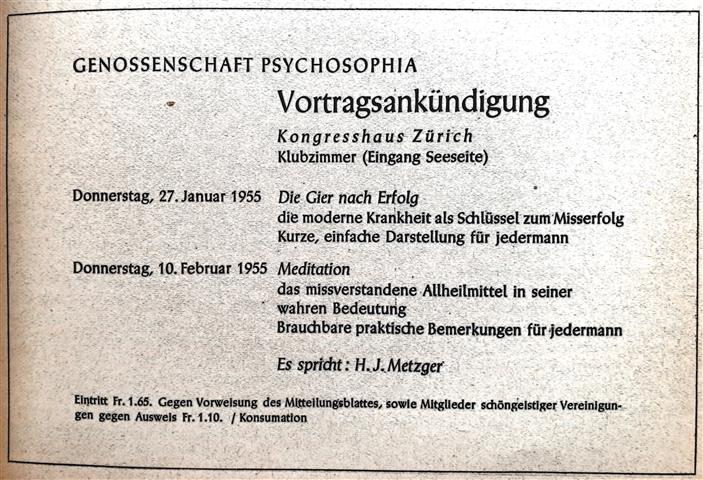

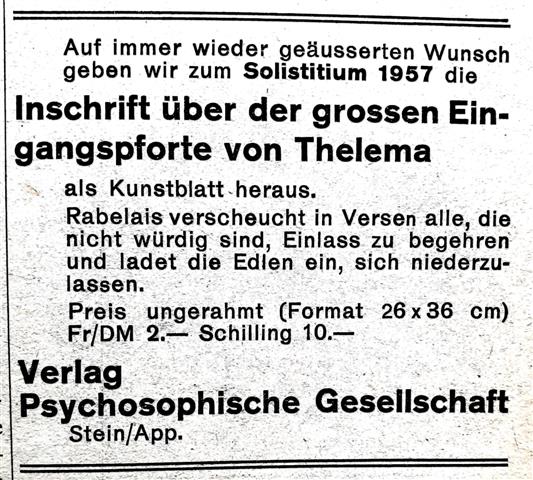
In May 1959 there was a "suggestion to initiate co-operative work [...] we do not anticipate to remain the focus of such a collaboration in order not to render impossible this idea with links to obediences or bias." [50] On March 20th 1961 the first number of the Metzgerite "Oriflamme" appeared; it followed on from the "EOL Newsletter" of August 1960 which was stopped without fanfare, and came two months after Herbert Fritsche's death. In the media Metzger did his recruiting as "organiser of the ancient and modern Theosophists, Pansophists, Illuminati, and Rosicrucians." This designation was used at a public lecture on January 10th 1964 with the theme of 'The Power of Reason.' He named the Theosophist Annie Besant (1847-1933, 33°, 90°, 96°) and his "spiritual Father" F.L. Pinkus as his colleagues (sic). [52] "We do not know of any diploma or any other document, nor of a commitment to pay membership fees [...] they were freely given donations for the upkeep of the institutions. These went through the accounts in a perfectly ordinary fashion." [53] The Ordo Militiae Crucis Templi Marcel Claude, one irregular Hierophant of the already highly irregular Rites of Memphis and Misraim, proposed Metzger as a member of this German order of Templars, Ordo Militiae Crucis Templi (OMCT). [54] Thus Metzger joined the OMCT on St. Martin's day 1962. [55] Prominent members found this incomprehensible, and demonstrated this by resigning; or so said Baron E.B. Pflüger, Prior of the Swiss branch of the OMCT, in his notice of withdrawal on January 3rd 1963. In Point 5.6 of this exhaustively detailed document the Baron asserted that Metzger had been made a Knight of the OMCT without so much as an interview, that he lived off his wife's work as a laundress and seamstress, and that he was of no fixed abode. [56] In 1964 Hans Heuer (1908-1975), the founder of the OMCT, gave up his office; he went on to found something called the 'Jacques de Molay Collegium.' The Order was completely reorganised in 1966, and 'profess-knights' (those who had taken vows) were no longer recognised. [57] At the OMCT's Chapter General, held on June 18-19th 1966 at Wiesbaden, Metzger put in an uninvited appearance; he was promptly struck off the membership-roll. Metzger was requested not to take any further part in their meetings, as the OMCT only accepted members who were Roman Catholics, or belonged to other orthodox or established churches. [58] Despite all this, later on in 1966 Metzger was still describing himself as a "Profess-Knight of the OMCT". 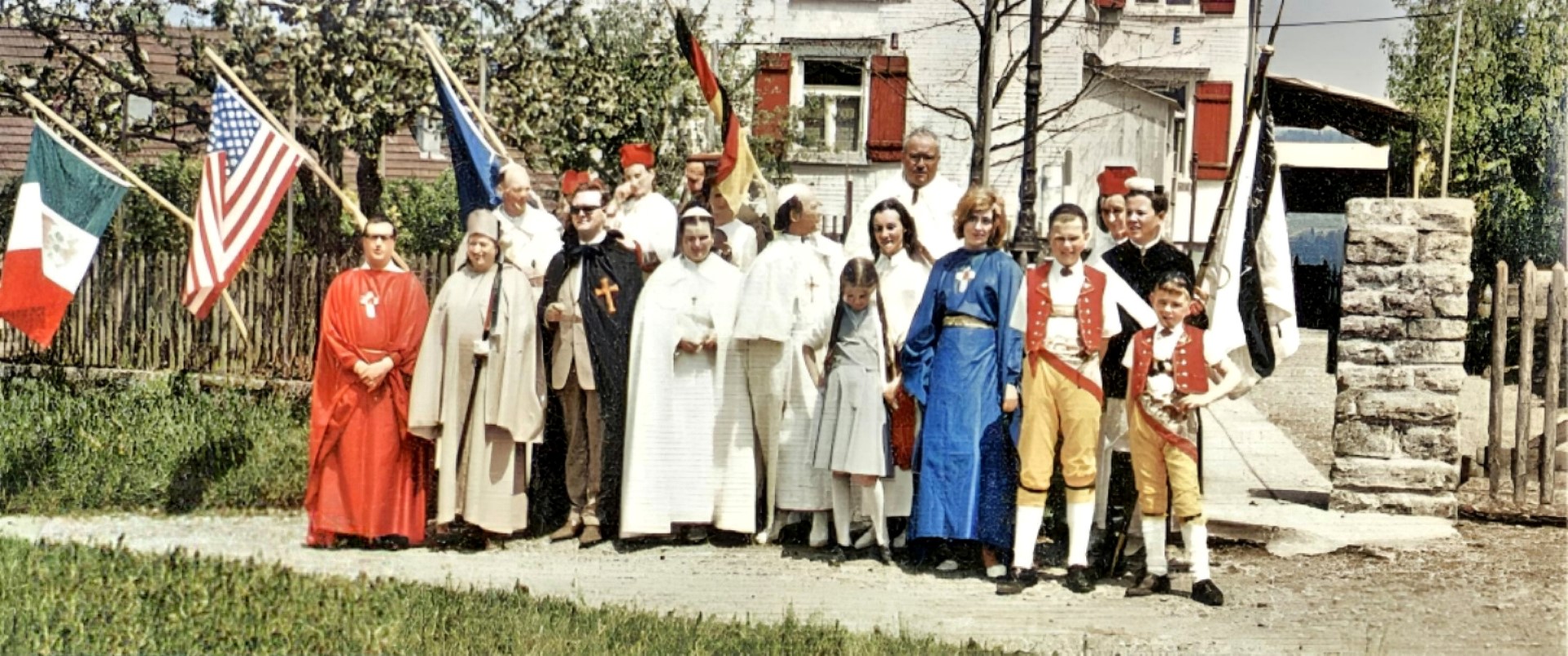
October 18th 1970: "The Psychosophical Society is the patron body supporting the existence of the Ordo Illuminatorum, World League of Illuminati, with the degree-grades of the O.T.O., F.R.A., G.C.C. [...] The Laws of the IO and the Statutes of the PS are in harmony with the Civil Code and financial laws of Switzerland. Because of their distinct statutes and corporate leaderships, they therefore exist as two independent bodies. The function of the groups is facilitated in various cases by individual contact." [60] This statement was undoubtedly published in view of the lawsuit with Walter Englert. It was claimed with complete confidence that "we are undoubtedly the realisation of an Abbey of Thelema, which has endured since long ago, and exists still." [61] Speakers at the seminars held at the 'Thelema Educational and Holiday Centre' in 1977 under the overall theme of a 'Free Spirit and Life School' included, apart from Metzger himself: Fräulein Aeschbach, Manfred Örterer, Adalbert Schmid, Robert Kehl, Franz Matouschek, Werner Stephan and Adrian Monk (who had travelled all the way from England). Between 1975 and 1978 seminars were also held by the following people: Peter Oswald, A. Bühler, Elimario Sommer, Paul Heynisch, Alfred A. Droz, Ernst Meier, Walter Biland, Kurt Hochreutener and Metzger's son, Simon. For the merely 'profane' outsiders, the place was also being promoted as an "air-cure resort — the pearl of the Appenzell countryside." "Every year Metzger would invite a certain free-thinking Catholic archbishop [Father J. Archimandrita] to join up with his Orders. He wooed him in every possible way — but unsuccessfully." [62] Unfortunately, Father Archimandrita only responded to my enquiries about his connection with Metzger and Stein in terms of the vaguest generalities. Memphis Misraim In Appenzell ? In 1955 Alfred Andreas Droz (b. 6.11.1906) became a "lawful Minerval" of the "Illuminati Order of Helvetia" in the "Grand Lodge of the Flaming Star". Metzger gave him a passage from Crowley's _Liber AL_ as an accompaniment; it was chapter 2 verse 3: "In the sphere I am everywhere the centre, as she, the circumference, is nowhere found." In the same year Droz "Alanus" was made a Grand Magus in Vienna, and on December 31st "Deputed Master of the Collegium Pansophicum" with a charter numbered 151. In 1956 he gained the Magus grade in the IO Helvetia, but at the start of 1957 Droz dropped Metzger, because Droz didn't accept the equal rights of the women in the Illuminati Order. Together with five other members of the O.T.O. and Illuminati from Stein, Droz tried and failed to form an alliance with the French Memphis-Misraim group, which had seceded from the A.M.O.R.C. under the Belgian Jean Mallinger. [63] Later on, Droz's group was regularised as a Masonic Craft Lodge by the Swiss Alpina Grand Lodge, and worked its rituals at the Masonic Temple at Roswiesenstrasse in Zurich. Droz subscribed to Metzger's "Oriflamme" up until 1962, and surprisingly enough continued to give lectures at Stein until 1978; he died in 1983. In Metzger's publications for 1958, Marcel Claude was enlisted with an invitation to Liège, for a "Convention of all Egyptian Masonic Rites" — i.e. the Memphis-Misraim Rite. [64] Claude was a master of the irregular "Chevaliers Bienfaisants de la Cité Sainte" [65] and permitted himself (he was the only candidate) to be elected as Grand Hierophant of the MM. But in 1962 he had to resign this office, as he had been unable to prove his legitimacy. [66] Paul Ruediger Audehm met Monsieur Claude at Stein in 1964: "On the Sunday evening we had plenty of opportunity to get our first impressions of him. A healthy old fellow of about sixty; quite tall and vigorous, with grey hair, he had a big moustache and a receding chin hidden by a pointed beard. He was wearing his Templar robes (a white cloak with an eight-armed red Templar cross). We never saw him taking anything but a really wholehearted part in the rites there. They [Metzger and Claude] greeted each other respectfully as old friends, while to us, [Audehm and Walter Englert] he seemed very kind and good-humoured." [67] Pierre Pasleau has published a photograph of Claude. [68] Deserving Death Under this headline in October 1988, the German news magazine "Stern" reported on a Memphis-Misraim group in Hamburg. It said that the group's leader Lothar Arno-Wilke, who claimed to be "Grand Master for the German Reich" (with no fewer than fifty lodges and two thousand members), had caused threats to be made against an errant member called Hans Senkel, and also had him kept hostage (carried out by two lodge members). The rituals as well as the records of this MM group had been forged by Wilke, wrote "Stern", a claim which was substantiated by Jean Mallinger's successor as head of Memphis-Misraim for Germany, Martin Erler. Markus Kumer, who belonged to Metzger's inner circle, reported that Frau Marie Christiane Schwarzweller (a member of Wilke's MM group) was a regular guest at Metzger's Temple workings. [69] Wilke supposedly possessed successions from Georges Delaire and Francois Bruyninckx, and likewise was Jean Mallinger's heir. The group was registered with the local court by E.R.M Brandt, and published a condemnation of Ellic Howe and Helmut Möller's complicated and hostile 'biography' of Reuss, using the name "Lord Grand Master of the 'Memphis-Misraim Order of International Co-Freemasonry'." This piece was signed by Elizabeth Gould, Christiane-Marie Schwarzweller and Lothar-Arno Wilke. [70] In fact Wilke had "stolen" his system and rituals wholesale from Rudolf Steiner's published ceremonies, which only referred to the "Office of Misraim", like Metzger's earlier "O.T.O. Orient Thuricensium Rituals." Feeling threatened, Senkel sent out a shoal of documents to the regular German Masonic Lodges between spring 1987 and spring 1988, in an attempt to clarify the situation. It appeared from these documents that a mass of competing Memphis-Misraim lodges existed in Europe; Senkel used them to expose the background of Wilke's Order, naming innumerable participants, and opined that Wilke's group had no claim to any tradition. Whether this Hamburg branch of the MM was the same as the 1973 Hamburg branch of the O.T.O., who reacted on Horst Knaut's articles, writing complaining reader's letters in both "Quick" and "Mensch und Mass", remains doubtful. In the 1960s, an O.T.O. based in Hamburg did maintain contacts with Kenneth Grant in London. [71] Thelema In Appenzell !! The "Newsletter of the Psychosophical Institute", which appeared sporadically after 1948, contained no Thelemic references apart from one short quotation from Crowley. It was not until the first number of the "Ketzerbrevier" in March 1953 that Crowley's Law of Thelema was made public in Switzerland, while the O.T.O. itself was first mentioned by Metzger in the third "Ketzerbrevier" of June 23rd 1953, and the second "Aequinox" of March 1955. In "Oriflamme" Nº 23 of January 1963 (the same month Metzger declared himself OHO) the O.T.O. was placed second in the list of bodies incorporated with the Psychosophical Society. From then on the PS existed mostly as the "Ordo Illuminatorum." By its 110th issue of June 1971, the "Oriflamme" was describing itself as "Official Order journal for all German-speaking provinces." Metzger, in whose "mind and works Theodor Reuss calmly lives on", [72] had "gained merit" through the publication of Crowley's writings, even though there had been a time when Crowley hadn't even been in the running as far as he was concerned. [73] Nowadays, of course, it is fashionable to celebrate Crowley as a Satanist, as the "Satan Week" in February-March 1994 demonstrated. Until Karl Germer's death in 1962 Metzger showed a much more positive attitude towards Crowley in his publications, which was of course linked to Metzger's ambitions to become OHO. [74] Metzger claimed that Crowley was "the most important figure in the history of modern literature." [75] "He [Crowley] had inconceivably outstanding qualities, though he was grotesquely incompetent in maintaining his social and economic position." [76] "Anyone who could produce such beautiful words, ['Every man and every woman is a star'] would achieve high ideals, have a true ethos, and evince true humanity. It speaks of a noble and exceptional character." [77] "Our ideal, Master Therion, means Master of Beasts." [78] "Death became a science, the vocation a daily sacrifice, love a technology regulated and constrained by an informed will." [79] "In accord with the Law of the new age 'Do what thou wilt shall be the whole of the Law,' problems with family, social and financial constraints are solved." [80] "Thelema is a remarkably practical doctrine. It simplifies people's lives, so that they can pitilessly cast aside all those unnecessary encumbrances hitherto thought 'indispensable'. But Thelema is also a very fine doctrine, as it makes a fundamental end of all obstacles and opposition." [81] Above last quotation come from an address given on the occasion of a performance of Crowley's mystic drama _The Heart of the Master_, which was first (privatly) produced at the Theater am Neumarkt in Zurich on March 21st 1954, "sponsored by the Psychosophical Company [...] in celebration of the 100th Equinox in 50 years of Thelemic work." [82] None of the Zurich theatre employees and owners interviewed could remember this performance, or find any printed programme for it. The only faint clue is that in 1954 the local owner of the Theater am Neumarkt was a 'Zurich Theatre Guild', whose premises could be hired for one-off private performances. Mornings in Stein began with the recital of "Tu, was du willst soll sein das ganze Gesetz" ("Do what thou wilt shall be the whole of the Law") — while the last words at bed-time were "Liebe ist das Gesetz, Liebe unter Willen" ("Love is the Law, Love under Will") — these statements being relayed via loudspeakers throughout the premises and out into the gardens. [83] "On New Year's Eve at 11 p.m. we entered the Temple, and there after a short time lit our torches, which burnt during the Solstice, to light our way three times round the garden to the sound of drums and pipes, leading lastly to the place where the old Christmas trees had been piled up, on which we threw the burning torches. Now the bells began to sound in the village. Some of those present could not be restrained from leaping over the fire, around which the New Year feast would soon be served." [84] From statements made by two immediate neigbours of the Stein commune, it is apparent that such nocturnal festivities took place right up to the middle of the 1970s. As the estate grew through further land purchases, what effectively became a full-scale parade trailed through the whole place, with never less than twenty people taking part; meanwhile the musical accompaniment over the loudspeakers seems to have become more and more ponderous with the passing years. After the parade the whole company would decamp to the Gasthof Rose for the night. [85] Hardly any further details can be discovered about the Festivals of St. John held on June 24th and December 27th by the Knights Hospitallers or Johannites at their chapel in Bubikon. People had "only the faintest memories of the ritual celebration" and were really "not inclined" to answer questions. "It is quite conceivable that people are reluctant to recall these things nowadays." [86] 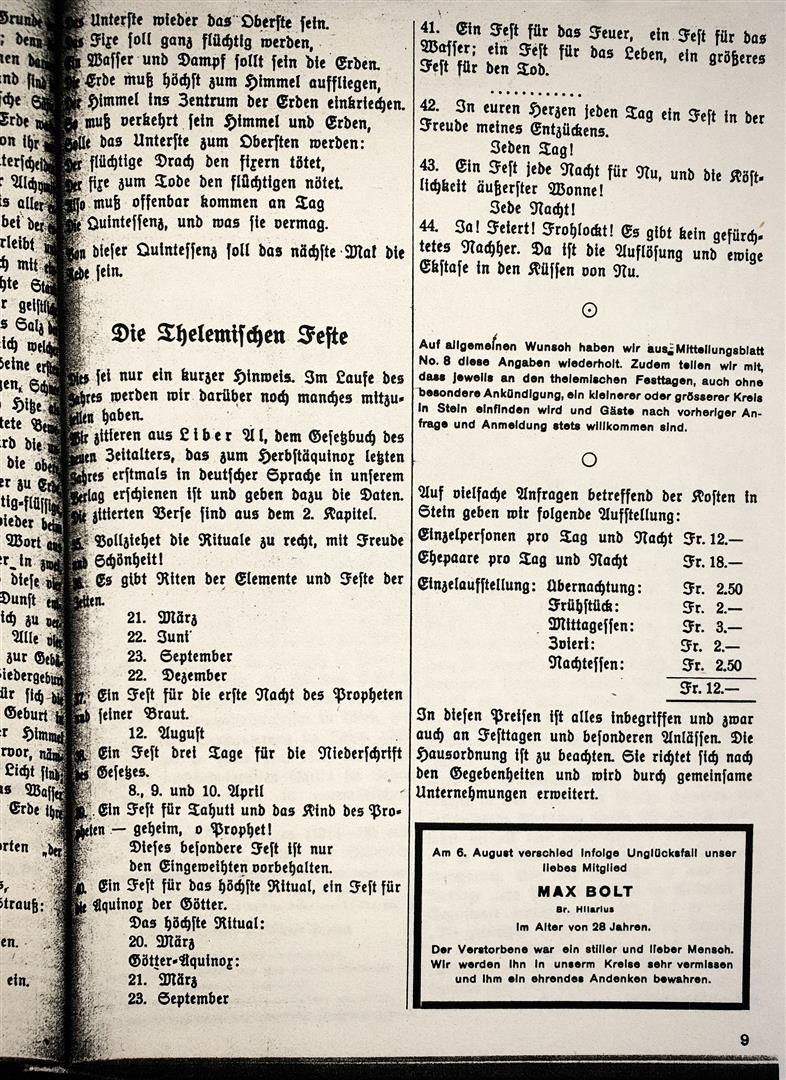
"Ritual at table with children: Before the meal: The youngest begins: 'Do what thou wilt shall be the whole of the Law.' All: 'It is our Will to eat and to drink, to fortify the body, to be able to fulfil the Law of God in Wisdom, Strength, and Beauty.' The oldest: 'So mote it be.' After the meal: The youngest: 'We thank the Almighty Architect of all worlds for food and drink.' All: 'Know to dare, dare to will, will to gain the Kingdom, and to rule, be silent.' The oldest: 'Love is the Law, Love under Will.'" [87] On Templar symbols: "It is idle to speculate that all these symbols were misunderstood, in the same way that the Templars were always defamed everywhere for such things as spitting and trampling on the Cross. The Cross, the symbol of Light (the Cross of Light), having been trampled on, is the shadow of the symbol of Light (the Black Cross, symbol of matter.)" [88] |
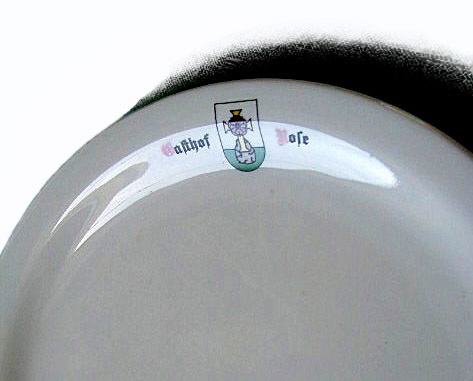
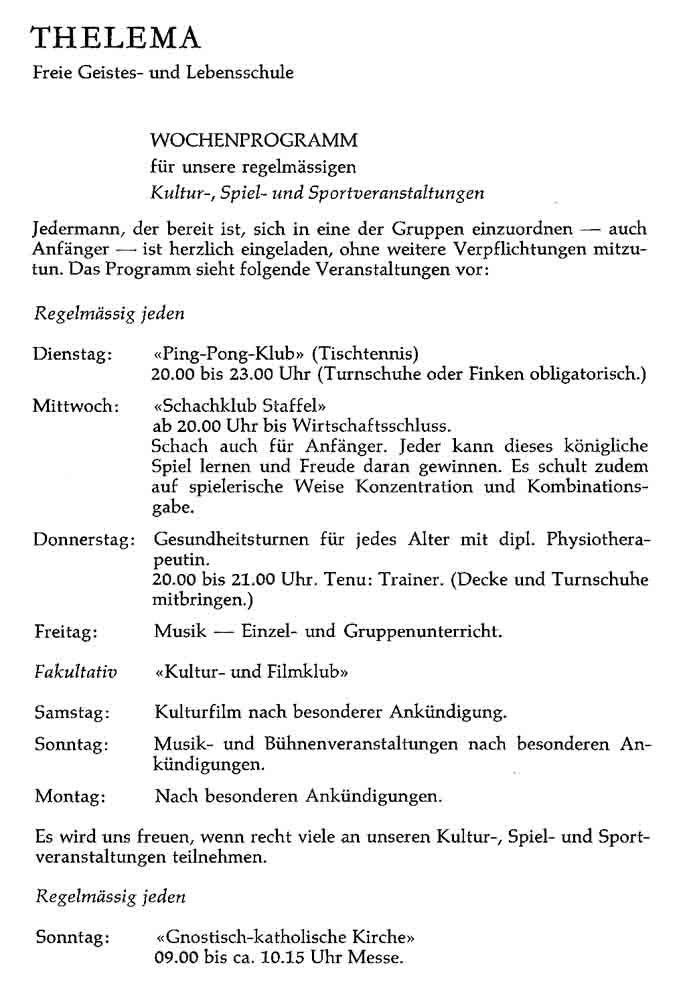
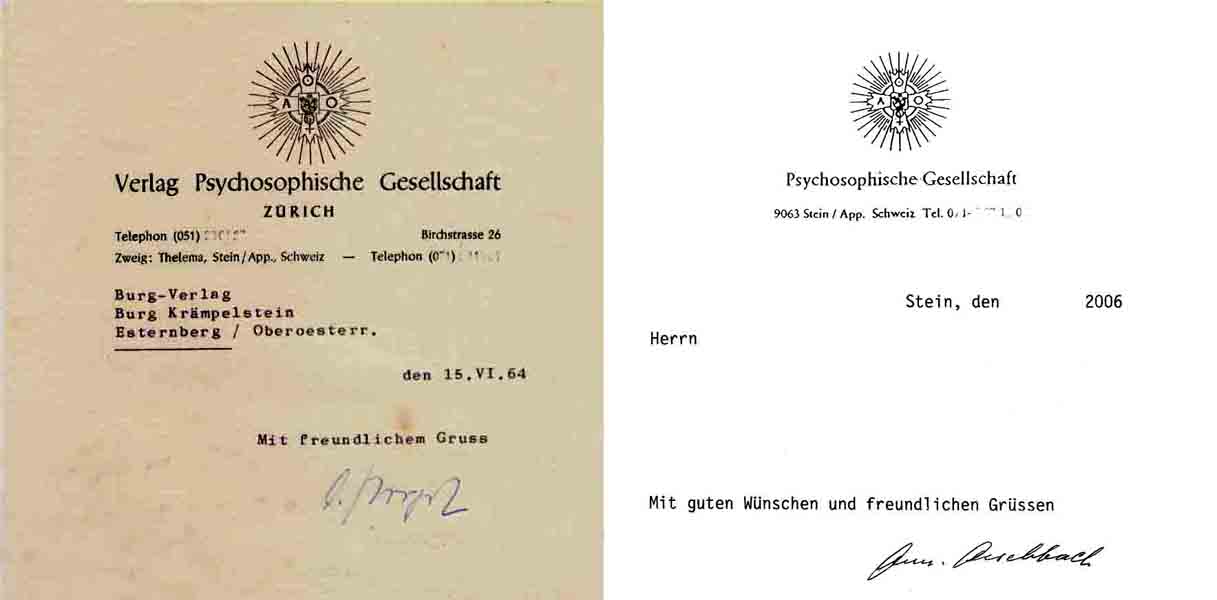
|
After Germer died, Metzger welded the O.T.O., F.R.A., GCC and IO
together, and abruptly changed his opinion of Crowley: "We are not
Crowleyans." [89] "Crowley's works are not iniquitous in
themselves, though all the publicity about him in the gutter-press, like the most
vulgar satire, was fatal." [90]
Annemarie Aeschbach loyally believed that many of Crowley's writings had been distorted by "ill-advised students." Besides which she thought that the second edition of John Symonds' (b. 1914) biography of Crowley, [91] had definitely not been written by Symonds himself. There was even less chance that Kenneth Grant's books had been written by Grant (b. 1924); both men, it seemed to her, were far too old to have done so. [92]
The crux of Metzger's teachings was now shifted from Thelema to Adam Weishaupt's doctrines of self-knowledge. The following doctrinal statement was published in the "Oriflamme" Nº 96 for September 1968; and the justification for the revision was quite simple: "The Order interprets the historical foundations in accordance with present circumstances. At the turn of the century the IO divided itself in two; one half of this division called itself the OTO. Both branches are now re-united." [93]. "Metzger's declarations had rarely read so nonsensically as when they'd been cooked up under the Thelemic label, in the broadest sense of the word [...] All that tosh about suffering, that hypocritical undertone when talking about pleasure for example, those piffling diagrams, that pedantic chicken-and-egg mentality. _Quo vadis_, Thelema?" [94] "Utterly useless in itself — pure philosophy!" [95] Quibus Licet Adam Weishaupt wrote in 1781: "At the end of each month the subordinate shall send a sealed letter to his superior, and further with the superscription _Quibus Licet_ or _Soli_, in which he shall show: 1. How he encountered his superior, whether he behaved harshly or kindly towards him, either then or later. 2. Whether he had any complaints against the Society. 3. What services he could render to the superior through the month. 4. What had he paid to the Order." [96] Weishaupt in 1787: "...each half year [...] whether he had been of free and fearless conduct, if he was pleased with the conduct of his superior; if although ill-used by someone within the Order during this time, he had retained his zeal and affection; if and why he had found himself disappointed in his expectations." [97] The Illuminati _Quibus Licet_ had been mutated into a magical diary under Metzger's régime, and had to enumerate the following points: descriptions of people, significant thoughts and statements, collected characters, personifications [?], summaries and responses to questions posed by the Order. [98] Besides providing a _curriculum vitæ_, the study of Order names was enjoined, as well as the choice of a special subject, and learning the history of the Mystery Schools: "It is indeed apparent from this that the student himself, whilst living under God's sponsorship, will find it easy to contemplate his soul. It is possible to include particular questions for the Provincial or Outer Head of the Order (O.H.O.) in the _Quibus Licet_, which are added under a particular seal, being marked in the first case with 'primo' and in the second with 'soli'." [99] In other O.T.O. branches the practice did not require members to give up their diaries for inspection. Only Crowley had regularly inspected his student's 'Magical Records', thus gaining a measure of control over them; but this was only done within the confines of his own Argenteum Astrum Order (A.·. A.·.). Metzger's collection of Orders consistently incorporated also the A.·. A.·., not only in its use of the _Holy Books_ of Thelema, but in the A.·. A.·. _imprimatur_ on its instructional documents, where Metzger signed himself as a "Præmonstrator". 
"Frater P[aragranus — Metzger] has declared that A.A. is now replaced by the Bavarian Illuminati — and this claim is not to be laughed at of consideration for all the oddness of it." [100] Gabriel Montenegro was of the same opinion, [101] while Israel Regardie even thought that Metzger possessed original Golden Dawn documents. [102] "Do not expect that admission is given thereon [the diary] - the contact with the inner circuit of all true Brothers and Sisters resolves the problem." [103] "The students must themselves eliminate any reservations they may have." [104] The student also had to "accept the incomprehensible" [105] "and see that he has not come here to hold discussions or listen to lectures without gaining knowledge from them [...] the requirements are: attentiveness, silence, work [...] Together with commitment to his teacher, he has to accept the teacher's methods without reservation [...] He loses his protection through opposing arguments, and he begins to doubt. Doubt, mistrust, resistance, and lack of respect for the teacher will in any case cut him off from the road to further progress." [106] "Brothers who are compelled to take an overview [...] we can abandon them" [107]. "Mockery is our greatest enemy." [108] 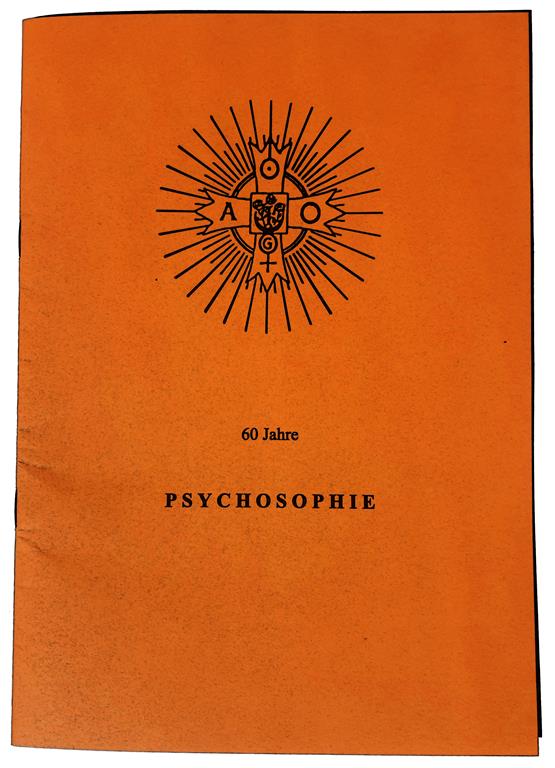
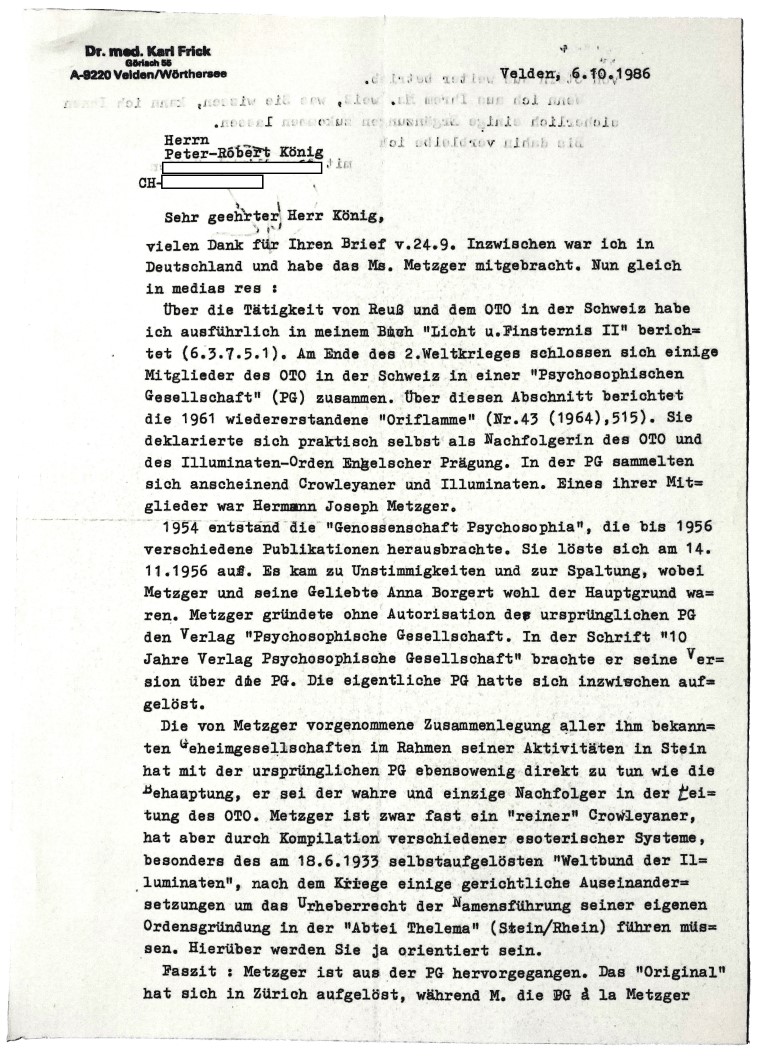
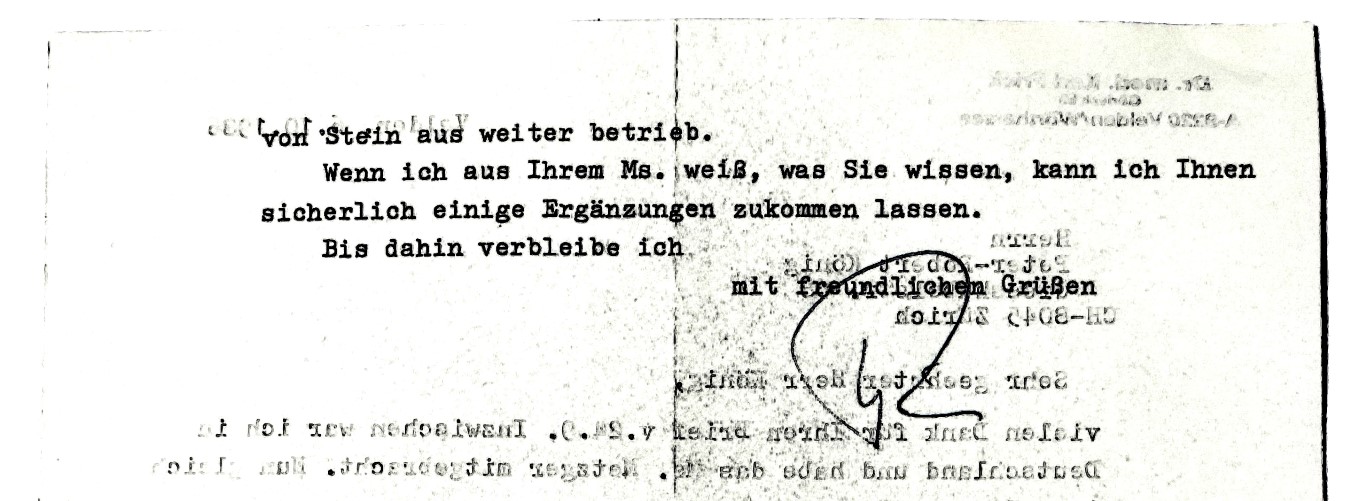
Notes to Chapter 10 of Das O.T.O. Phänomen (1994)
Translated and adapted from a chapter on the O.T.O. Protagonists in "Das O.T.O.-Phänomen" (1994) by Mark Parry-Maddocks. German original online. More about all this in: Andreas Huettl and Peter-R. Koenig: Satan — Jünger, Jäger und Justiz. To the main page of Photographs and Documents. To the other chapters of the English online version of "The O.T.O. Phenomenon" book. O.T.O. Phenomenon navigation page | main page | mail What's New on the O.T.O. Phenomenon site?
|
|
|
|